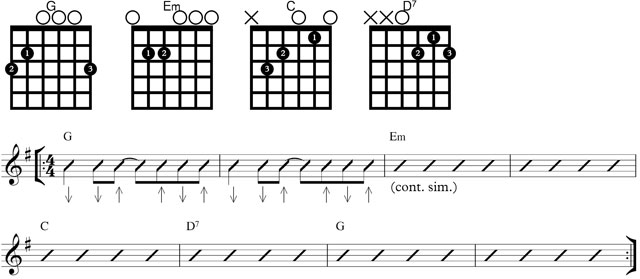No products in the cart.
Guitar Practice Sessions. Part. 1 (Beginner / Intermediate level)
by Cliff Bradley
We’ve all heard the saying “practice makes perfect”, right? Well, for starters, let’s forget about “perfect”. In music there’s no such thing as perfect, and if there was it would probably sound boring anyway.
But… of course, practice is certainly key to learning anything new, expanding our skills, or adding that extra layer of polish and spark to a piece we’re already playing. We all know that we need to practice in order to improve, so the question becomes “am I using my practice time in the most efficient way possible?”
Here’s the first in a series of tips on how to get the most bang for your buck from your practice time.
Break it into smaller chunks
Just like when we’re tucking into that 15oz medium-rare prime rump steak, we’ll get much better results if we cut it up into bite size portions. How we do that depends a little bit on the material we’re playing, but a good example is for when learning a chord strumming accompaniment to a song…
ex.1 strumming pattern to the chord changes of ‘Stand By Me’ (King, Lieber & Stoller).

A pretty basic example, but these principles work right up to the most furiously strummed Mumford & Sons guitar parts.
We’re going to break this type of playing into two distinct elements and practice them separately. The order doesn’t matter too much, maybe alternate back and forth, spending about 10-15 minutes on each.
1. The Chord Changes
- – Make sure each chord is fingered correctly, always aiming to get the fingers as close to the frets as is practical.
- – Strum each chord just once, then change to the next one – we don’t want any focus on rhythm here, just moving fluently from one chord to the next.
- – Depending on how hard the changes are, you can even break it down further to just pairs of chords (eg. back n’ forth between G & Em).
- – Pay close attention to where the fingers are moving. Are there any fingers that stay in the same place between the two chords? (eg. finger #1 going from G?Em, & from C?D7).
- – Are there any fingers that slide up or down a fret on the same string between chords? (finger #3 from D7?G)
2. The Strumming Pattern
Use the first chord of the progression and practice getting the strumming rhythm smooth. Start off with a slower tempo, always ensuring the rhythm is correct. Don’t rush the crotchets & minums at the slower tempos!
- – If you need to, break it down further by just tapping the rhythm on your guitar (or clapping) to ‘feel’ the rhythm.1
- – Ensure that you’re using the right combination of down & up strums. If you get one of them wrong, you’ll probably never play the pattern correctly (yes, it’s that important!).
- – Try using a metronome to give you a steady pulse to play along with.
Once you feel that you’ve mastered those two elements separately, then it’s time to put the two together. You should have the chord changes confident enough by this point that your main focus is on the rhythm/strumming, and not as much on moving the fingers for the chord changes. Your strumming hand should always be the driving hand – a slightly fluffed chord change is a lot less noticeable to your audience (even if it’s only the cat) than a stumble in the rhythm pattern. If it’s not quite working yet, no problem, just go back to the separate elements again.
I guarantee you’ll be playing the song properly a lot quicker and a lot better this way than if you just dive in and try and do the whole thing together from the get go.
Article by Cliff Bradley. Read more from Cliff on his web site: www.cliffbradleymusic.com
If you prefer video lessons, you should take a look at our Easy Guitar Songs series.


